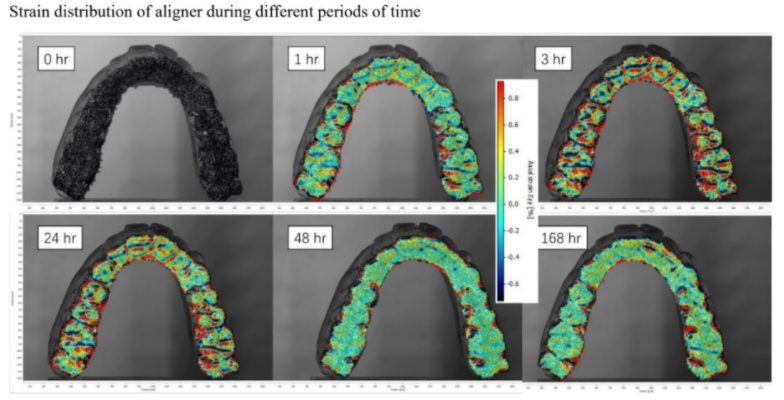Orthodontic teeth aligners enabling deeper analysis and personalized treatment plans (2020-227, Dr. Alex Fok)
A system and method for measuring stress and strain distribution of invisible orthodontic teeth aligners.

Applications
- Invisible orthodontic teeth aligners / braces
Key Benefits & Differentiators
- Better understanding of changes in strain distribution
- No visible modification required to existing invisible braces
- Personalized, more effective and efficient treatment through direct patient monitoring
Orthodontic Teeth Aligners with Fluorescent Speckles
“Invisible” thermoplastic teeth aligners are an increasingly popular method for orthodontic teeth alignment correction as these aligners are, unlike traditional fixed braces, aesthetically pleasing, convenient and easy to wear and remove. Currently, these aligners work mostly by displacement-control, with the forces applied to the teeth largely unknown. In addition, these aligners are sequentially replaced on a standard schedule based on average patient response and not based on individual response, which can lead to slow, painful, ineffective treatment with suboptimal results or even dire consequences. Improved understanding and control of the forces delivered to teeth can improve the efficiency of tooth movement, patient comfort, safety and outcome. Prof. Alex Fok’s research group at the University of Minnesota have developed a system and method for measuring strains and subsequent changes in mechanical properties of orthodontic teeth aligners. In this system, invisible fluorescent speckles are included in the transparent teeth aligner. The method involves sequentially acquiring digital images of the aligner over time, and analyzing them using digital image correlation (DIC) and finite element analysis (FEA) techniques to extract useful mechanical responses of the aligner. These mechanical responses can then be used to understand the various forces at play (within the aligner and between the teeth and the aligner) and changes in the mechanical properties of the teeth and aligner on a patient-to-patient basis. Such patient-specific understanding of the dynamic interaction between teeth and aligners will help in implementing more personalized orthodontic treatment plans and better overall outcomes, without compromising the aesthetics of invisible teeth aligners.
Phase of Development
TRL: 3-4A working prototype demonstrating the effectiveness of fluorescent speckled patterns.
Desired Partnerships
This technology is now available for:- License
- Sponsored research
- Co-development
Please contact our office to share your business’ needs and learn more.
Researchers
- Alex Fok, PHD, MSc,Professor, Department of Restorative Sciences
- Susan Mantell, PhD, Department Head, Mechanical Engineering
- Brent Larson, DDS, MS, Professor, Division Director, Department of Developmental and Surgical Sciences